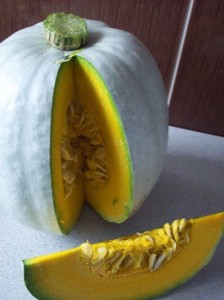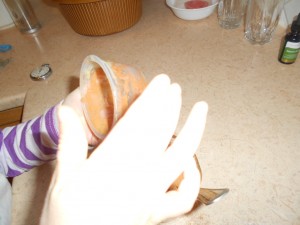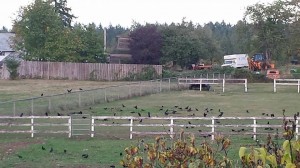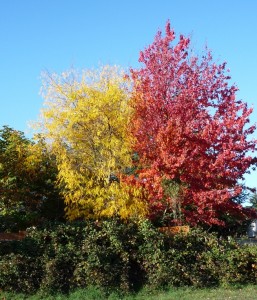Using senses to explore the world stimulates brain development and early learning. Fall time has some special smells that will connect to children’s experiences and knowledge of fall. A few of the smells for this time of year could be apples, squash, corn, cinnamon, pumpkin pie, smokey bonfires and piles of leaves.
 The sense of smell is somewhat different from the other senses. For sight, we can look at a beautiful view or a picture on the wall. For hearing, we can listen to music or singing. But there’s no sort of art-form for smell, no art gallery or concert hall for walking around and sniffing. Smell doesn’t happen by itself, it’s part of something else. That could be why smells are so often linked to emotions and why they take up some a large chunk of memory. Did you know that humans can recognize about 10,000 different smells?
The sense of smell is somewhat different from the other senses. For sight, we can look at a beautiful view or a picture on the wall. For hearing, we can listen to music or singing. But there’s no sort of art-form for smell, no art gallery or concert hall for walking around and sniffing. Smell doesn’t happen by itself, it’s part of something else. That could be why smells are so often linked to emotions and why they take up some a large chunk of memory. Did you know that humans can recognize about 10,000 different smells?
 For a sense of smell play-of-the-day with your child, you could make a batch of playdough with some cinnamon. For a snack, some apple slices with a sprinkle of cinnamon are more than tasty, they even smell yummy. In the meantime, whenever it’s appropriate throughout the day, help your child notice the different smells. There will be many different smells from cooking and from the fridge. Dishwashing, hand, and laundry soaps will also have other scents. You might be able to go for a walk outside and sniff out fall. Some cities allow burning of fall leaves so there could be a smokey smell in the neighborhood.
For a sense of smell play-of-the-day with your child, you could make a batch of playdough with some cinnamon. For a snack, some apple slices with a sprinkle of cinnamon are more than tasty, they even smell yummy. In the meantime, whenever it’s appropriate throughout the day, help your child notice the different smells. There will be many different smells from cooking and from the fridge. Dishwashing, hand, and laundry soaps will also have other scents. You might be able to go for a walk outside and sniff out fall. Some cities allow burning of fall leaves so there could be a smokey smell in the neighborhood.
What’s your favorite fall smell; maybe a pumpkin spice latte? Does your child have some special fall experiences connected to smell?



